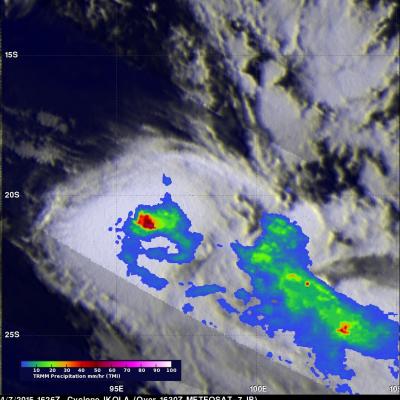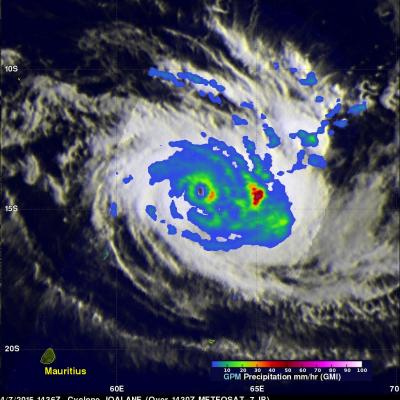GPM Sees Remnants of Joalane
The GPM core observatory satellite had a last look at the remnants of Cyclone Joalane in the South Indian Ocean on April 14, 2015 at 1135 UTC (about 16:35 Local Time). GPM's Microwave Imager (GMI) instrument found very little rainfall around Joalane's center but light to moderate rainfall in bands on the outer edges of the rapidly weakening tropical cyclone.




